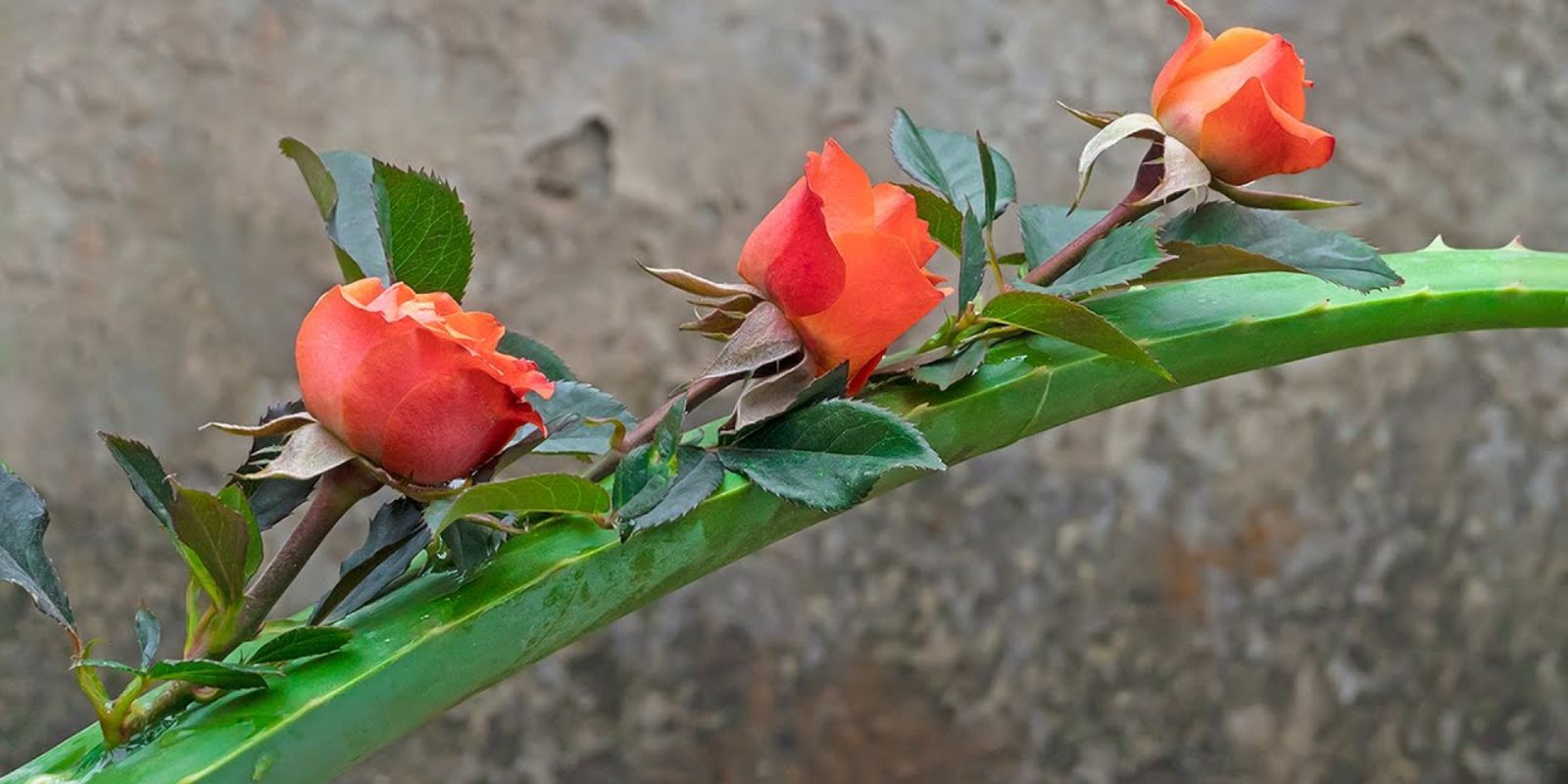Grafting is a time-honored horticultural technique that allows gardeners to combine the best attributes of two different rose varieties into one plant. By utilizing aloe vera in the grafting process, you can enhance the likelihood of a successful union, promoting quicker healing and healthier growth. This comprehensive guide will walk you through the entire process of grafting roses using aloe vera, ensuring you have all the knowledge and tools necessary to achieve stunning results in your garden.
Understanding Rose Grafting
What is Grafting?
Grafting involves joining the tissue of one plant (the scion) with another (the rootstock) so that they grow together as a single plant. This technique can:
- Combine Traits: Merge desirable characteristics from two different rose varieties.
- Improve Disease Resistance: Utilize rootstocks that are resistant to diseases and pests.
- Enhance Growth: Combine the vigorous root system of the rootstock with the beautiful blooms of the scion.
Why Use Aloe Vera?
Aloe vera is renowned for its natural healing properties and can be a valuable tool in grafting:
- Rooting Hormones: Aloe vera contains hormones that can stimulate root development and tissue repair.
- Antimicrobial Benefits: It helps protect the grafting site from infections and diseases.
Materials and Tools Needed
Before starting, gather the following materials:
- Healthy Rose Plants: Choose a compatible scion and rootstock.
- Sharp Pruning Shears or Knife: For making precise cuts.
- Fresh Aloe Vera Gel: To apply to the grafting site.
- Grafting Tape or Sealant: To secure the graft.
- Potting Soil and Containers: For potting the grafted rose, if needed.
Step-by-Step Guide to Grafting Roses
1. Selecting Your Rose Varieties
Choosing Scion and Rootstock:
- Scion: Select a healthy, vigorous branch from a rose plant known for its desirable flowers or growth habits. The scion should be about 4-6 inches long with 2-3 leaf nodes.
- Rootstock: Choose a strong, disease-resistant rose plant that will serve as the base for your graft. Ensure the rootstock is compatible with the scion variety.
2. Preparing the Scion and Rootstock
Preparing the Scion:
- Cut the Scion: Use sharp pruning shears or a knife to make a clean, slanted cut on the scion just below a leaf node. The cut should be smooth to ensure a good fit with the rootstock.
Preparing the Rootstock:
- Cut the Rootstock: Make a matching cut on the rootstock where you intend to attach the scion. This cut should also be clean and smooth.
3. Applying Aloe Vera Gel
Why Aloe Vera Gel?
Aloe vera gel acts as a natural rooting hormone and provides protection against pathogens.
Application Process:
- Extract the Gel: Cut a fresh aloe vera leaf and scoop out the clear gel with a spoon.
- Apply Gel: Coat the cut surfaces of both the scion and rootstock with the aloe vera gel. Ensure that the gel covers the entire area where the two parts will join.
4. Performing the Graft
Grafting Technique:
- Match Cambium Layers: Align the cambium layers (the green layer just under the bark) of the scion and rootstock. Proper alignment is crucial for successful grafting.
- Secure the Graft: Use grafting tape or a similar material to hold the scion and rootstock together. Wrap the tape tightly around the grafting site to secure it in place.
5. Wrapping and Watering
Wrapping:
- Wrap the Graft: Ensure the grafting site is securely wrapped with tape or sealant to protect it from external elements and maintain moisture.
Watering:
- Initial Watering: Water the grafted plant thoroughly to settle the soil and ensure the graft area is well-hydrated.
- Humidity: If possible, create a humid environment around the graft by covering the plant with a clear plastic bag or dome. This helps maintain moisture and supports healing.
6. Monitoring and Caring for the Graft
Checking for Success:
- Monitor Growth: Check the graft regularly for signs of successful growth, such as new leaves or shoots emerging from the scion.
- Removing Tape: Once you observe that the graft has successfully taken hold and new growth is apparent, gently remove the grafting tape. This usually occurs after 4-6 weeks.
Ongoing Care:
- Watering: Continue to water the plant as needed, keeping the soil moist but not waterlogged.
- Fertilizing: Apply a balanced fertilizer to support the growth of the newly grafted rose. Follow the manufacturer’s instructions for application rates.
7. Transplanting and Long-Term Care
Transplanting:
- Potting: If the grafted rose is growing in a container, consider transplanting it to a larger pot or garden bed once it has established itself.
- Garden Placement: Choose a sunny location with well-draining soil for planting. Ensure the plant receives adequate light and space to grow.
Long-Term Maintenance:
- Pruning: Prune the rose plant as needed to maintain its shape and encourage new growth. Remove any dead or damaged branches.
- Pest and Disease Management: Monitor the plant for pests and diseases. Use organic or chemical treatments as needed to keep the plant healthy.
Conclusion
Grafting roses with aloe vera is a powerful technique that combines the best attributes of different rose varieties into a single, beautiful plant. By following the steps outlined in this guide, you can enhance your gardening skills and achieve stunning results. Enjoy the process and celebrate the beauty of your thriving rose garden!
Happy grafting and gardening!

